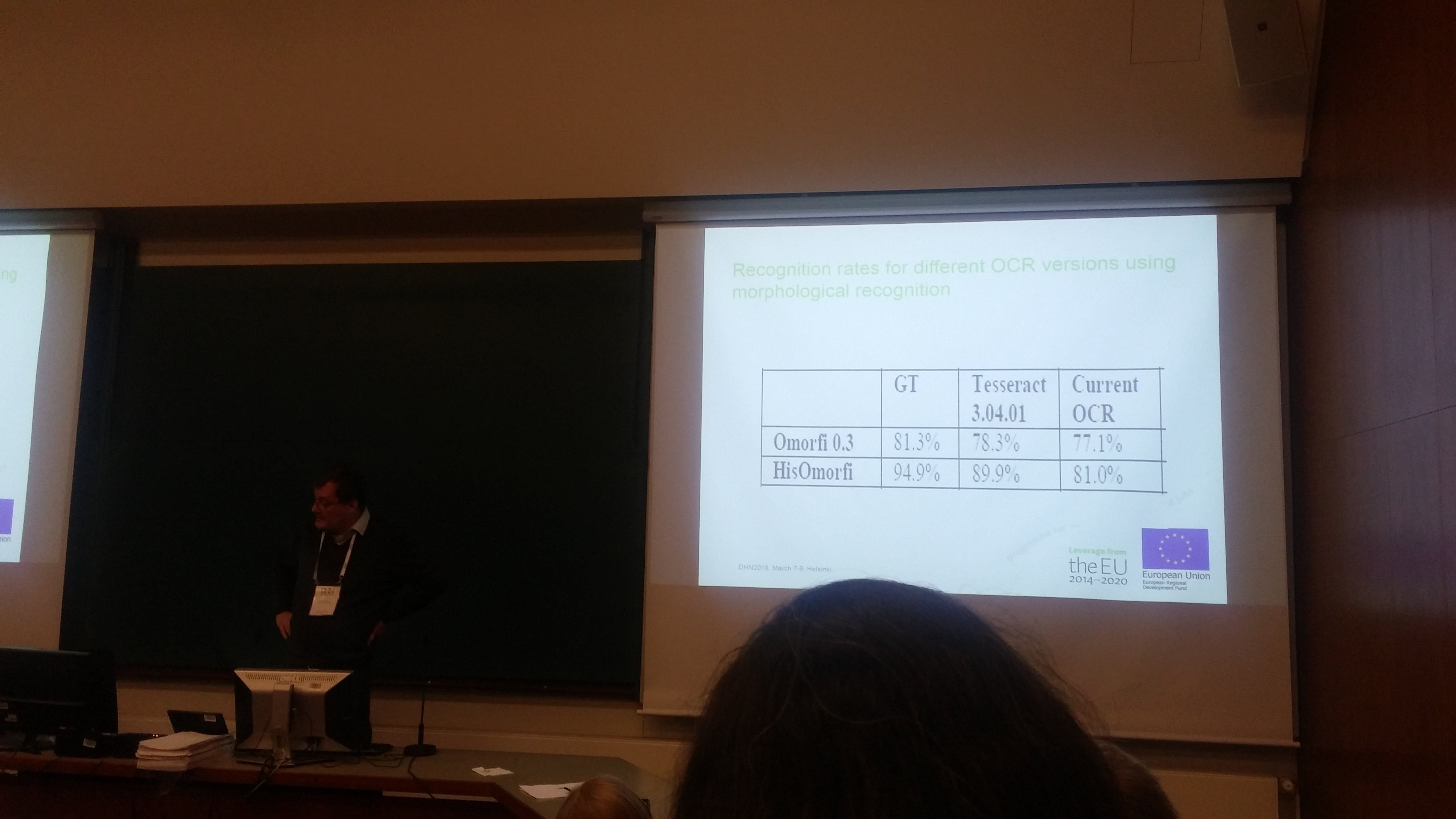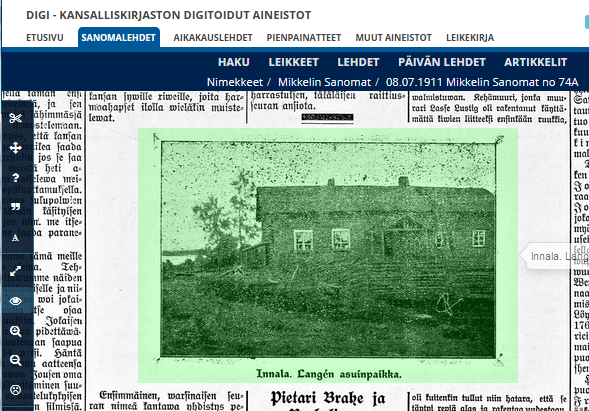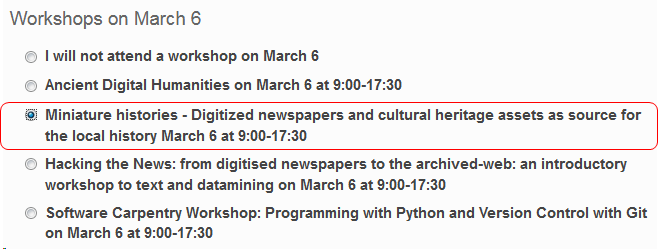Tutkijoiden lisäksi myös paikallisesta historiasta kiinnostuneet ja siitä eteenpäin kertovat ovat kiinnostuneita digitoiduista aineistoista ja käyttöä olisi lisätarinoille tutuilta paikoilta. Tämän takia Digitalia-projektin puitteissa käytiin pyynnöstä esittelemässä https://digi.kansalliskirjasto.fi -palvelua Mikkelin oppaille, jotka järjestävät Mikkelissä ja lähialueilla kierroksia tarvitsijoille.
 Kävimme läpi Digin perustoimintoja ja sitten unohduimmekin hakuun, koska oppailta löytyikin heti hakuideoita paikallisista merkkihahmoista, joista unohduimme etsimään lisätietoja. Fraasihaku, eli nimen tai muun sanaparin laittaminen lainausmerkkien sisään on tässä se helpoin tapa päästä alkuun. Hakuehto
Kävimme läpi Digin perustoimintoja ja sitten unohduimmekin hakuun, koska oppailta löytyikin heti hakuideoita paikallisista merkkihahmoista, joista unohduimme etsimään lisätietoja. Fraasihaku, eli nimen tai muun sanaparin laittaminen lainausmerkkien sisään on tässä se helpoin tapa päästä alkuun. Hakuehto
"Ernst Lampen"
vie hakutuloksiin kuten ylläoleva kuva näyttää.
Jos tuntuu , että tarvitsee hiukan enemmän hakuehtoja, tällöin läheisyyshaku voisi olla kelpo valinta. Läheisyyshaussa tiettyjä sanoja etsitään annetun sanaetäisyyden päästä toisistaan, esimerkiksi
"maanviljelijä Virtanen"~20
josta välttämättä ei voi olla aivan varma, missä järjestyksessä sanat ovat etsisi näitä kahta sanaa maksimissaan 20 sanan etäisyydeltä toisistaan – jos näin on , on aika suuri todennäköisyys että ne löytyvät samasta artikkelista.
Henkilöjen nimien haussa tosin kaimoja löytyy usein paljon, joten on hyvä kun hakijalla on tietoa henkilöstä muutoinkin, jolloin hakua voi myös rajata vaikka lehden ilmestymispaikan mukaan tai päivämäärällä jolloin jotakin henkilön elämäntapahtumia on sattunut.
Digitoidut sanomalehdet, aarteistojen aarteisto! ❤️ (Ällistyin, kun löysin 1880-luvun Savo-lehdestä mainoksen ”sporttimiehille”!)
— Kaarina Hazard (@KaarinaHazard) April 21, 2018
P.S. Digistä löytyy nyt pieniä päivityksiä eri puolille. Tervetuloa kokeilemaan!






